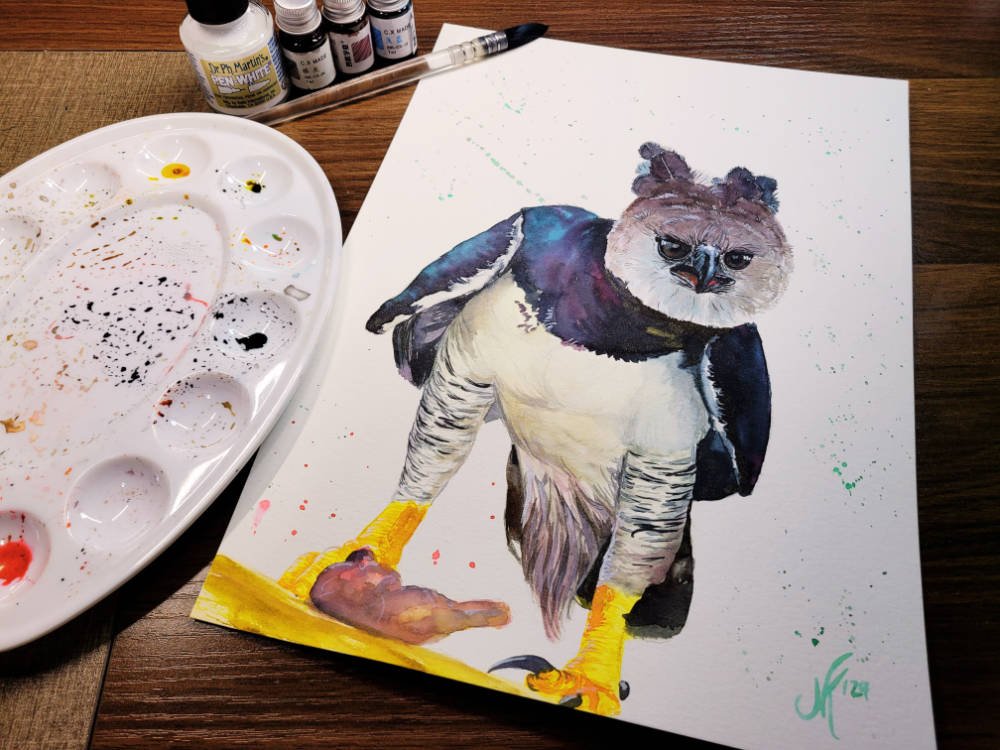
Meet the Harpy Eagle!
The harpy eagle, one of the largest and most powerful eagles in the world, is native to the rainforests of Central and South America. With a majestic appearance and incredible hunting abilities, the harpy eagle is named after the revered harpies of Greek Mythology. It continues to inspire descriptions of mythical beasts today, acting as the main inspiration for how Fawkes, the phoenix in Harry Potter, was portrayed. Beyond looking good, their striking features also hide incredible abilities…
Scientific Name: Harpia harpyja
Phylum: Chordata
Order: Accipitriformes
Genus: Harpia
Kingdom: Animalia
Class: Aves
Family: Accipitridae
Species: H. harpyja
IUCN Redlist Status:

A Look That Demands Respect!
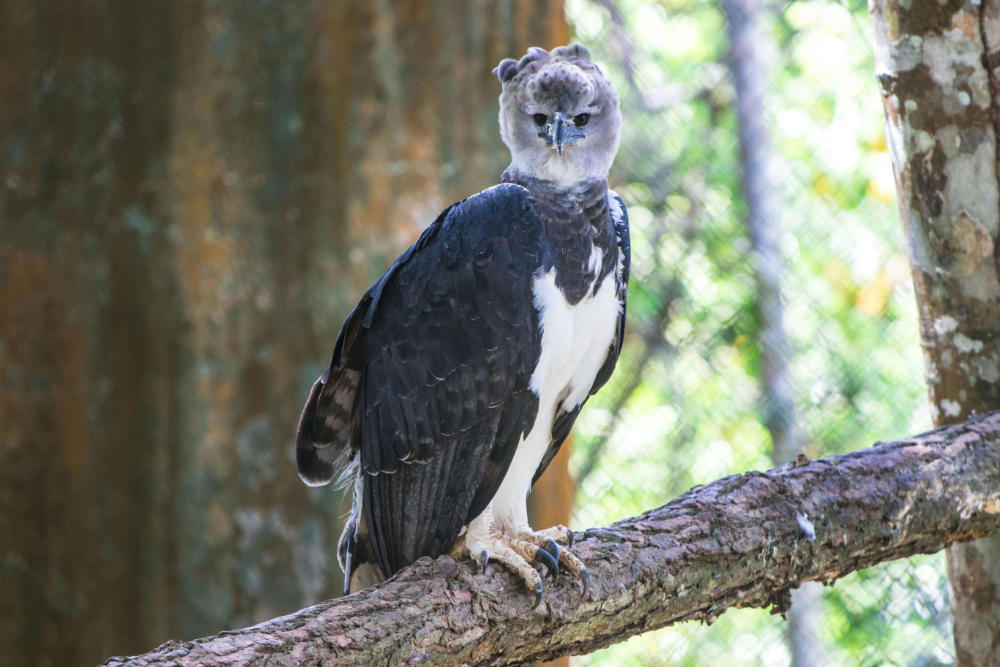
As a large bird of prey, the harpy eagle commands attention. It has a distinctive grey double crest of feathers on its head that fans out when it feels threatened or excited. These birds also have large talons and a wingspan of up to 7.5 feet! Compared to their bodies, that’s actually relatively short! What they lack in length these wings make up in breadth, and this unique shape helps them navigate through dense forests. A dark gray body and white underside complete their monochrome look, interrupted only by bright yellow talons.
Where They Soar
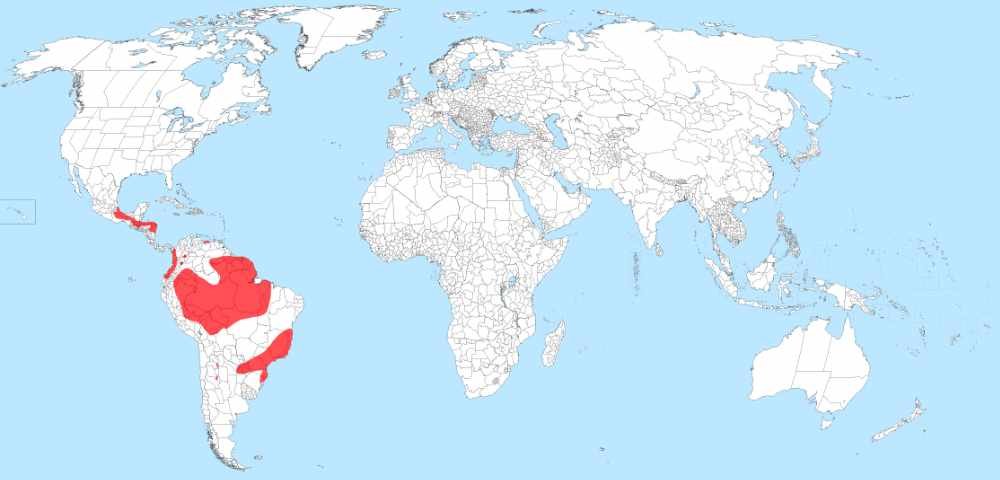
Relatively rare, harpy eagles sparsely inhabit tropical rainforests in Central and South America, from southern Mexico to northern Argentina. They are most commonly found in Brazil. These birds favor tall trees and need vast areas of untouched forest to thrive.
What’s on the Menu?
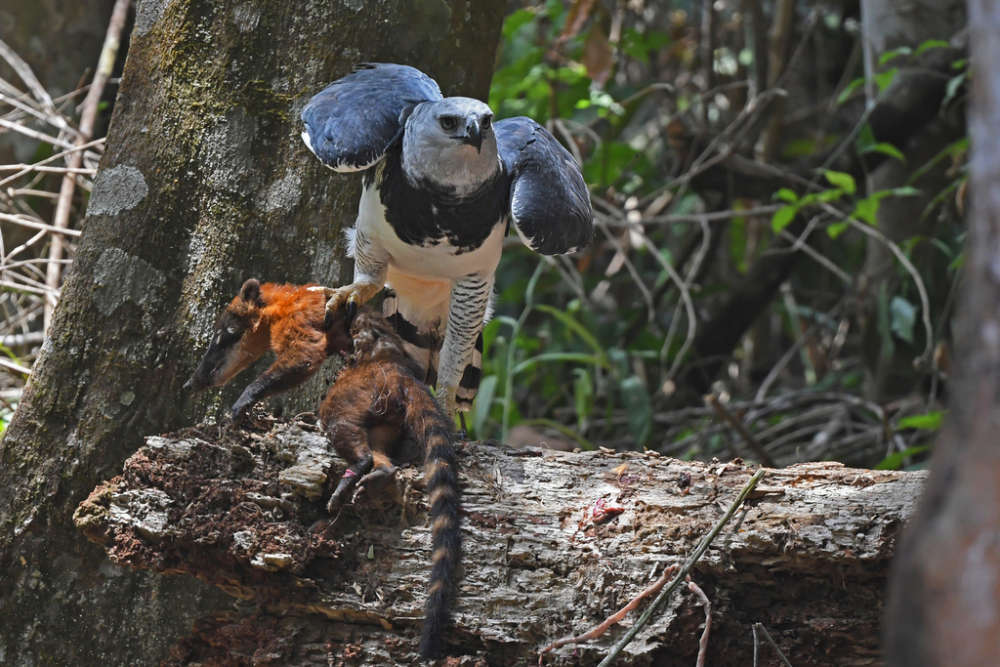
Harpy eagles are apex predators, proudly sitting on the top of the rainforest food chain. These birds crave meat! With their powerful talons, they specialize in snatching prey such as sloths, monkeys, and opossums right off the trees! They are ambush hunters, relying on their stealth to get close to their prey before launching a rapid attack.
Feathery Headdresses
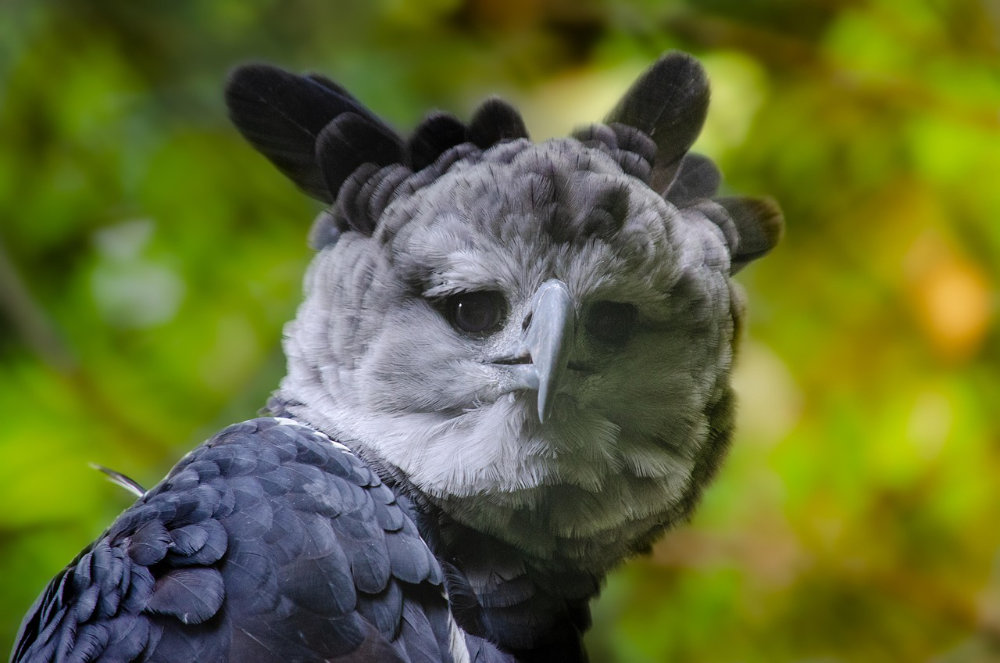
Despite not having jewelry as humans do, harpy eagles have no lack of facial adornment. A crest of long feathers, usually lying flat, makes their appearance known by standing straight up when threatened. In addition, smaller feathers form a facial disk to enhance hearing, giving these animals their signature circle-shaped face.
Harpy Eagle Families
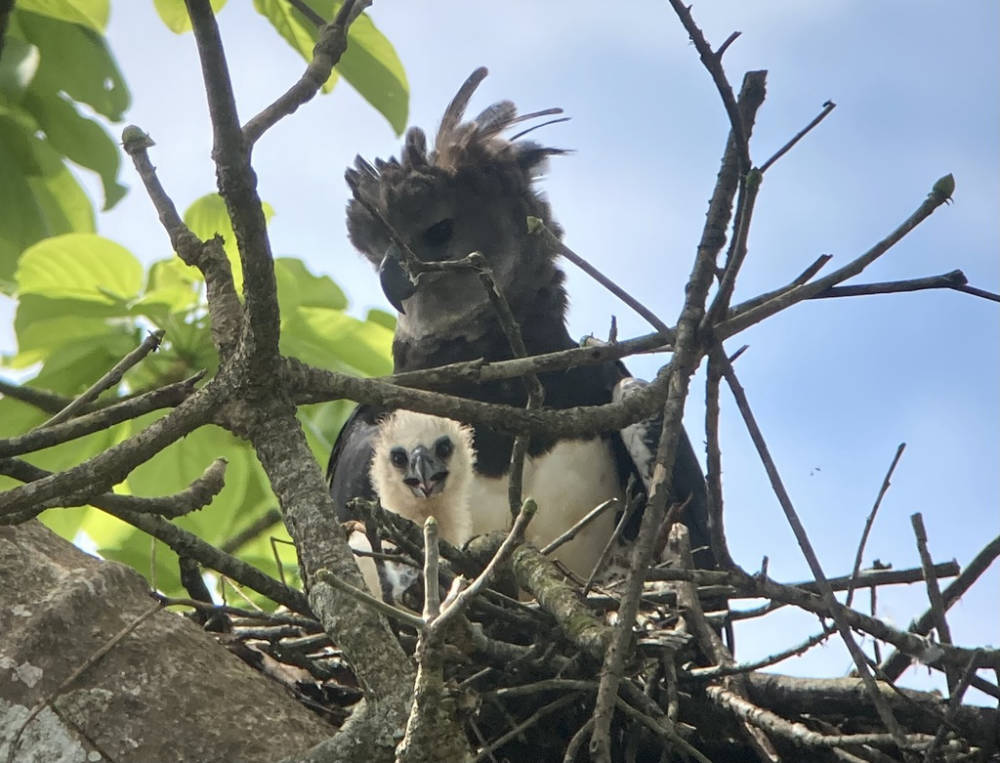
Harpy eagles are quite the romantics, mating for life and working together to raise their young. They lay one or two eggs every two to three years, with only one eaglet usually surviving. Both parents contribute to hunting and guarding the nest, which is typically built high up in a tall tree. Once hatched, young eagles stay with their parents for up to two years, learning essential hunting and survival skills.
5 Fun Facts About Harpy Eagles
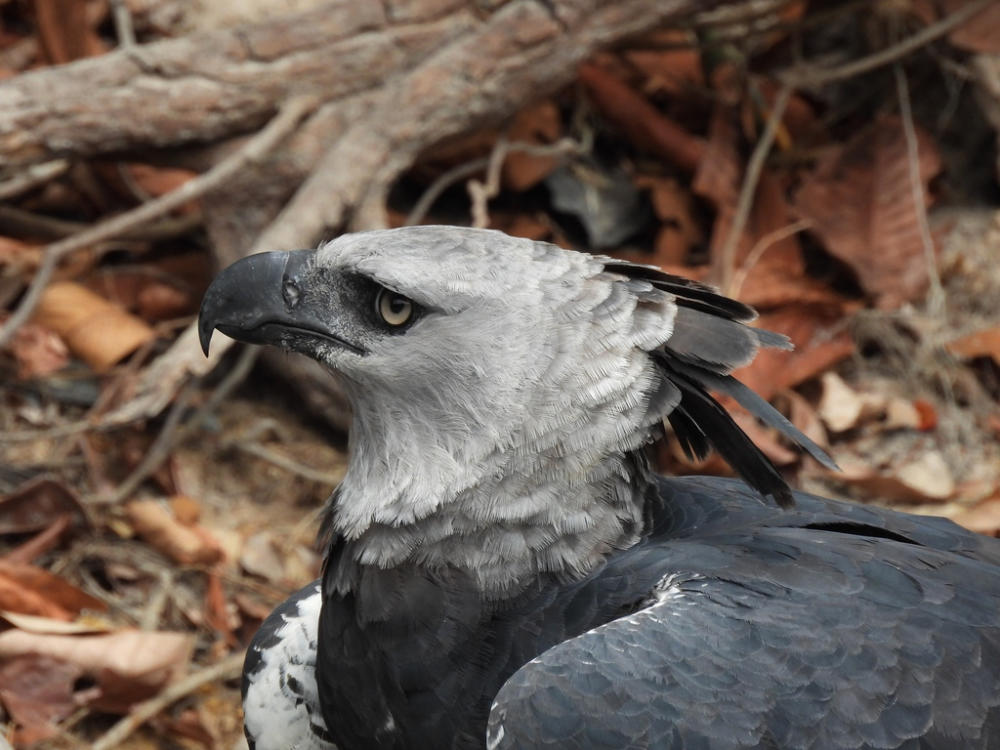
- Massive Talons: harpy eagles have talons as long as a grizzly bear’s claws and as big as a large human hand, giving them one of the strongest grips among all eagles.
- Silent Soarers: Despite their size, harpy eagles are not clumsy giants. They are nearly silent in flight, helping them ambush their prey undetected.
- Symbol of Strength: The harpy eagle is the national bird of Panama, symbolizing power and resilience. It is depicted in Panama’s coat of arms.
- Alarm Clock: When alarmed, usually in response to rain or direct sunlight, baby harpy eagles make a “chi-chi-chi-chi” sound to express their disapproval.
- Mythical Figures: Harpy eagles have always been compared to phoenixes and other legendary creatures. To Aztecs, Harpy Eagles were sacred to the deity Quetzalcoatl.
Threats to Their Survival
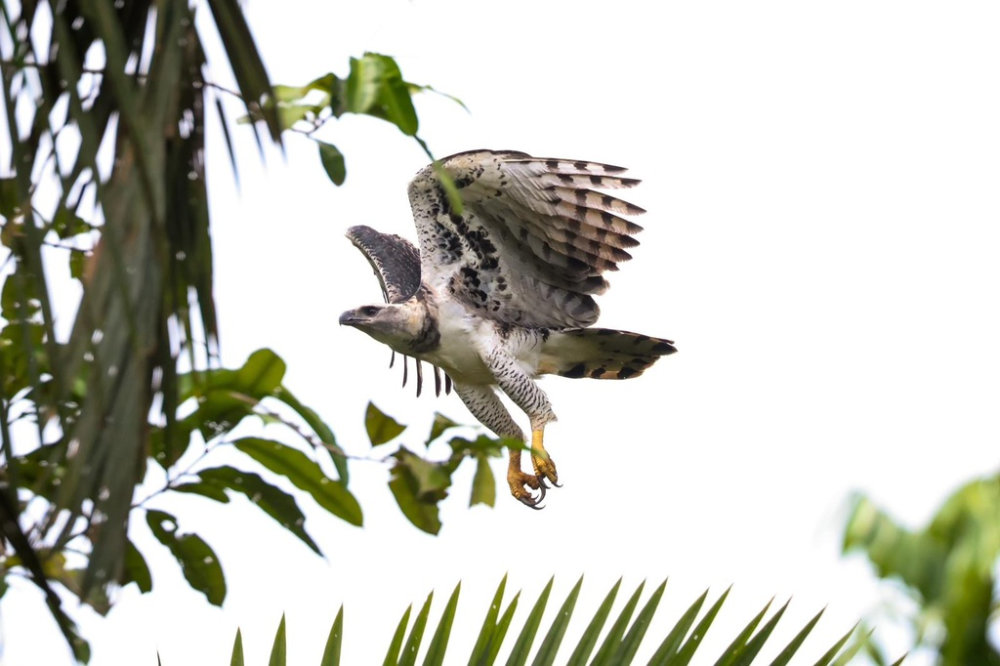
Sadly, harpy eagles are listed as Vulnerable on the IUCN Red List, with only around 20,000 to 50,000 of them left in the wild due to significant threats like:
- Habitat loss due to deforestation, logging, and cattle ranching
- Hunting
- Slow reproduction cycles
- Loss of prey due to deforestation
Efforts to Save the Harpy Eagle
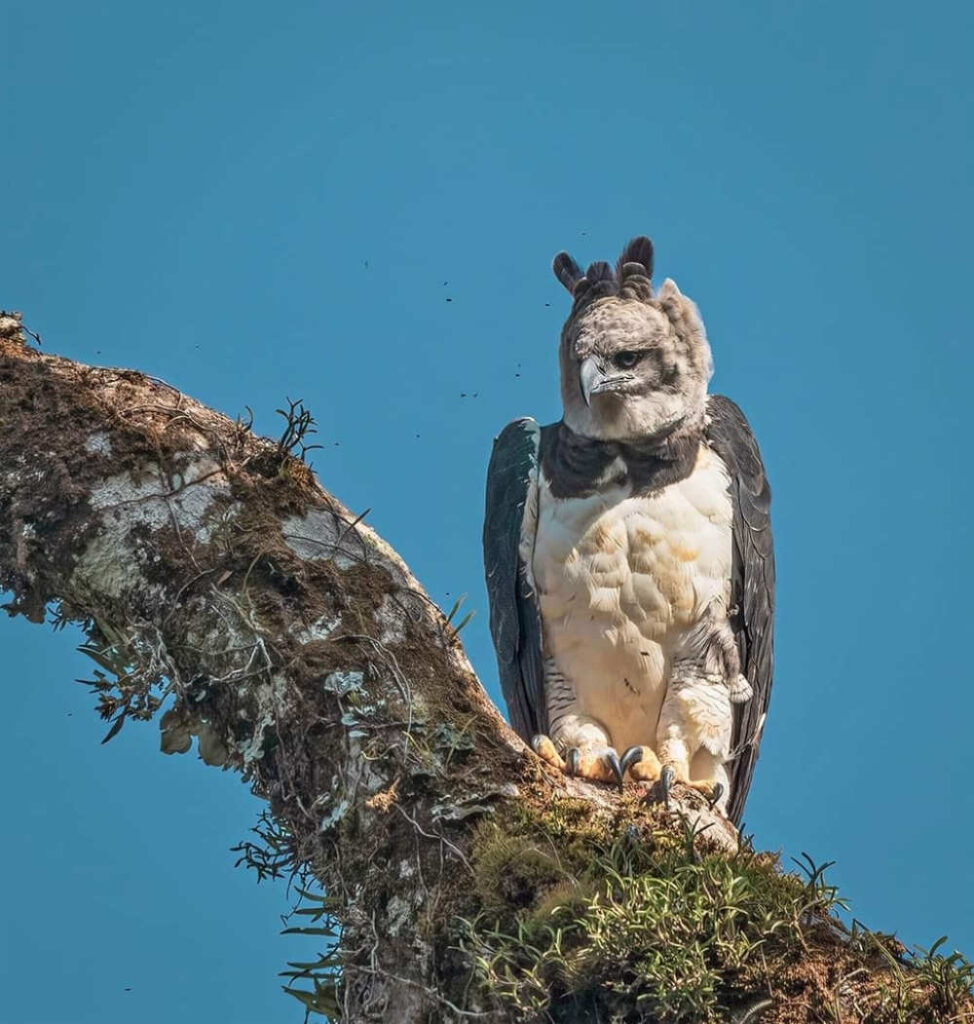
Conservation efforts focus on protecting the habitats of Harpy Eagles and educating local communities on their importance in the ecosystem to prevent human hunting. Organizations like The Peregrine Fund and the World Wildlife Fund (WWF) work to monitor Harpy Eagle populations, reduce human-wildlife conflict, and preserve rainforests, all to ensure the continued survival of this majestic animals.
Here are a few things YOU can do to help as well:
- Donate to charities with a focus on conservation. Some include: International Union for Conservation (IUCN), World Wildlife Fund (WWF), and The Peregrine Fund. These organizations are out in the field protecting forests, conducting research, and spreading knowledge to communities.
- Shop at Artsefact: Part of all proceeds go towards wildlife and habitat conservation.
- You can also take a more hands-on approach in the field, by participating in ongoing research, habitat restoration, or monitoring the population of the habitats.
- You can also OWN a harpy eagle (ethically of course), through a symbolic adoption, which allows you to contribute to conservation efforts. The funds raised will go towards habitat protection and research.
- Try to avoid products linked to deforestation, and purchase products that are certified as sustainable, such as FSC-certified wood and paper products, which help lower the demand for deforestation in harpy eagle habitats.
- Use your social media presence to raise awareness on the issues harpy eagles are facing.
Buy Harpy eagle Art & Save Wildlife
10% of all profits support wildlife and habitat conservation efforts, so every artwork you collect helps protect the planet.
Harpy Eagle Fact Sheet!
Would you love to have all the info compact on a factsheet? Sign up for our e-mail Newsletter to unlock it!
Here’s how you can gain access:
Resources
peregrinefund.org/explore-raptors-species/eagles/harpy-eagle





